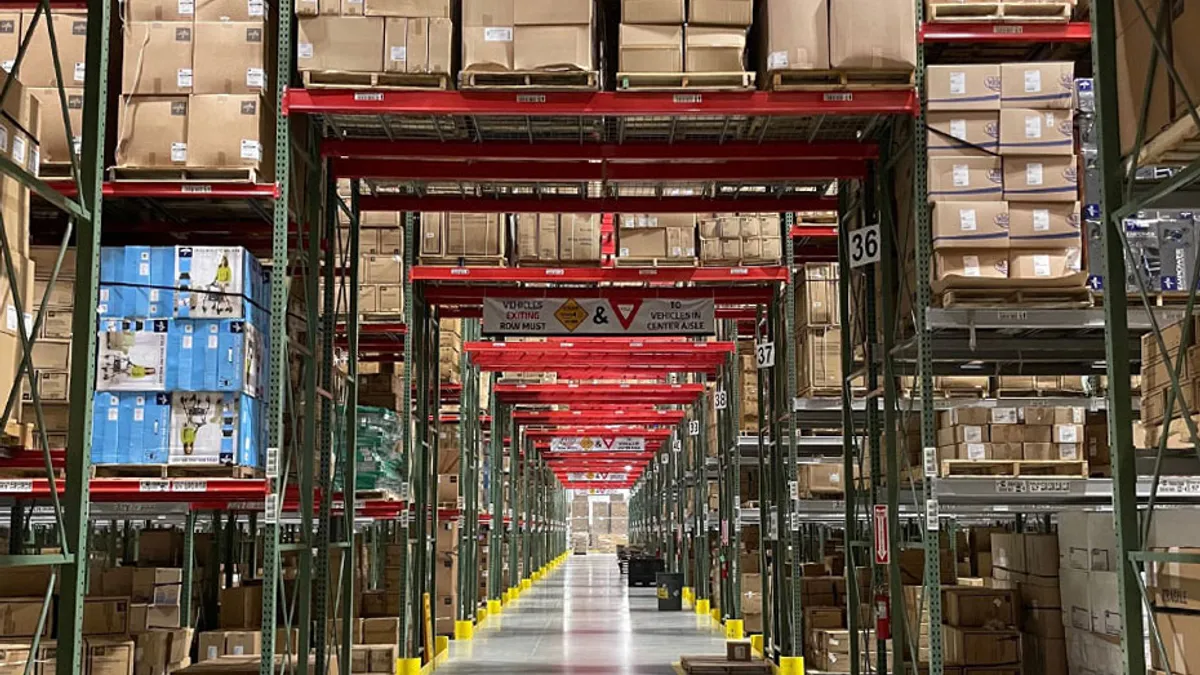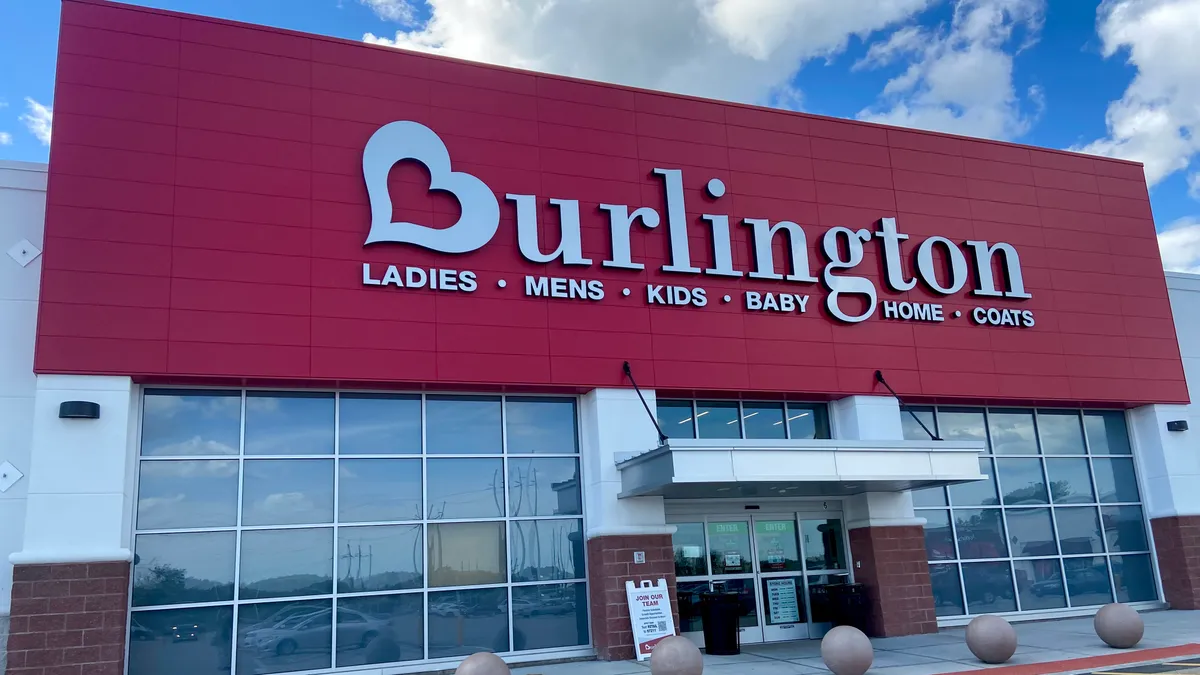In late September, Nike joined the cadre of companies to announce something along the lines of “decisive action” on inventory.
That was the phrase used — twice — by Nike Chief Financial Officer Matthew Friend on a call with analysts, one that mentioned the word “inventory” 48 times.
Friend echoed other executives in deploying that phrase. Target chief Brian Cornell, for example, mentioned “bold decisive actions” and a “decisive path” in an August analyst call (in which the word “inventory” was featured even more, at 73 times).
Both executives were talking about markdowns and other measures to rid their operations of product that customers weren’t buying, at least not at the levels or prices their companies expected.
By the second quarter of 2022, retail inventories were up 31% over Q2 last year, according to S&P Capital IQ and FTI Consulting analysis. FTI Consulting’s Global Co-Leader of Corporate Finance and Restructuring, Michael Eisenband, wrote recently that the inventory overhang was potentially “the most troubling sign that the tide may be turning against the retail sector.”
Because of its timing, Nike’s announcement brought a new wave of jitters through an industry that was been jostled around since the early months of the year, with demand for discretionary goods sagging in an era of spiking prices for gas, food and housing.
“Nike was pretty ugly,” Michael Baker, senior research analyst with D.A. Davidson, said in an interview. “That was even worse than we thought.”
The aim of those major players, and many others, has been to free up space in stores and warehouses and purge themselves of seasonal or outdated items. That, in turn, is so retailers can reset for the holidays, with products people will buy.
The big question hanging over the season is whether companies will succeed in their efforts. Are inventories at that Goldilocks just right levels, or will the inventory hangover last through the holidays and beyond? And if the latter, just how bad will it be?
“Retailers are over-inventoried, and they’re very concerned. They placed too many orders when there were supply chain challenges. So now they’re sitting on a glut of inventory as they enter this holiday season, and they know the economy is turning,” Alexa Driansky, a director in AlixPartners retail practice, said in an interview. “I think the year ahead is going to be a bloodbath.”
‘We’re still in the throes of it’
In retail, inventory has hit “record” and “peak” levels, according to an early October note from Cowen analysts. Driving the dollar value of that inventory is both unit increases and costs for acquiring the inventory.
The analysts added that, because of inventory levels, “gross margin expectations into 2023 are too high as markdown allowances rise, storage costs rise and higher cost inventory flows onto income statements and [foreign exchange] transactional pressure is rising.”
“I think the year ahead is going to be a bloodbath.”

Alexa Driansky
Director, AlixPartners Retail Practice
D.A. Davidson’s Baker wrote in September that retailers were “drowning in inventory,” with levels up 22% from last year and hitting a 10-year high. What’s more is the gap between inventory growth and sales growth has become a chasm over recent quarters. At the time of the note, Baker wrote that margins should be near their “trough.”
Since then, Nike reported, giving the market yet another gut punch. The sports gear giant said that inventory grew 65% in the quarter ending Aug. 31 while gross margin fell by 220 basis points on markdowns, supply chain costs and unfavorable currency exchange rates.
Less than a month later, Adidas followed suit, cutting its guidance (again) for sales and margins for the year while citing, in part, “a significant inventory build-up as a result of lower consumer demand in major Western markets since the beginning of September.” The extra inventory, the company added, would likely necessitate markdowns through the rest of the year.
Hasbro was another to suffer. It reported in October a 31% hit to operating profit in its consumer products unit as inventory buildup led the toymaker to take on extra costs and markdowns.
“Big brands as well as department stores have come out and said, ‘Hey, we’re still in the throes of it,’” Matt Garfield, managing director with FTI Consulting, said in an interview. “We’ve already made the pullback that we can, we’ve downsized orders, we’ve canceled orders. The feeling is still there.”
No other option
While last year many players might have wished for more inventory amid robust demand and widespread supply chain snafus, today there is no upside to high inventory levels as demand falters.
All the options cost the bottom line in some way. Likely the most common way to cope with overages is markdowns.
In a KPMG survey of retail executives released in September, 56% said they expected an inventory hangover following the holiday period.
Of those, 52% planned to use clearance sales to manage the excess, 48% expected to cut receipts and manage inventory down, and 41% planned to use sell-downs or return items to vendors, according to the KPMG study. Another 24% said they planned to sell inventory to liquidators and discount retailers.
An Accenture survey of retail executives released in October found nearly all of them (99%) said they had increased their promotional activity as part of their holiday plans. Another 35% said their companies are deeply discounting or taking other measures to get rid of excess inventory.
“Retailers who will be stuck with all this excess inventory have no option other than to either clear out the inventory by significantly discounting and taking a profit hit this year, or packing and holding the inventory … and putting it in storage and holding it for next year,” Driansky said.
Garfield has talked with one apparel company that has set up multiple reserve distribution centers to handle excess inventory. It’s a strategy, Garfield noted, that only works with core commodities (such as colored polo shirts or shorts that sell year to year), and also a strategy that can get costly. That extra warehouse spaces costs money, for one thing.
“Everyone always thinks about the working capital impacts, but they fail to think of the operational impacts,” Garfield said. “You become a hell of a lot less efficient when you're at capacity or above capacity.”
For example, Garfield noted, when distribution sites are loaded up with inventory, workers might have to move multiple pallets around to get to the pallet they need. Garfield also pointed to an apparel company he’s worked with that has had to pick from off-site storage facilities because the company ran out of pick locations in its primary distribution center.
There is also the option of selling off the inventory to a liquidator, but Garfield said he hasn’t observed as much of that. “It’s too much of a margin cut for the level of inventory excess we’re seeing,” Garfield said. “Liquidation makes sense when you’re talking about a limited part of your portfolio.” But in many cases it’s the “entire assortment” that is affected by overages, Garfield added.
“You become a hell of a lot less efficient when you’re at capacity or above capacity.”

Matt Garfield
Managing Director, FTI Consulting
The costs and margin hits to holding or clearing inventory aren’t the only pain point for retailers and brands. While snarls have largely eased from last year, companies still face elevated supply chain costs from higher fuel prices, wages and warehousing rates.
That said, the Cowen team pointed to deflating freight and input costs as a “silver lining” to the holiday gloom — the downside is those costs are unwinding in large part because consumer demand is down and retailers are selling less, and therefore shipping less.
All of the costs and markdowns explain why the Cowen analysts said that margin woes will continue into 2023, and that consensus estimates for “aggressive” margin recovery in the retail world were likely too sunny and need downward revisions.
Clean for Q4. Or cleaner, anyway
So is there any chance that the “bold” and “decisive” actions taken this year to correct ahead of the holidays worked? Not if Nike and Adidas are any predictor, but things may have improved in the grand scheme.
“Do we think they’ll be clean by the holidays? We think they’ll be cleaner than the second quarter,” Baker said. “So when all is said and done, looking at year over year growth in inventories … it will still be up and still be heavy, but it will still be up less than we saw in the second quarter.”
Inna Kuznetsova, CEO of supply chain planning firm ToolsGroup, said in emailed comments that, with early holiday shopping underway in October, “we’re already seeing a lot of excess inventory being discounted heavily now due to errors in planning.”
Kuznetsova pointed to electronics, and particularly televisions, as an overstocked category in the industry, as well as household items and home goods, and apparel and fashion, while other categories such as cosmetics are seeing rising demand.
FTI’s Garfield also noted that some categories are grappling with excess inventory more than others. He pointed to home decor — which saw consumers pull forward a good deal of spending in 2021 — as well as footwear and apparel as having a hard go of it.
“Certain sectors are just going to get hammered, and they’re not having the opportunity to clear through that inventory,” Garfield said. “The bigger challenge is how [do] they create freshness, bring the seasonality while dealing with all these high inventories.”
For all the pressure on margins from markdowns, Baker also pointed to a countervailing effect for retailers: All of the discounts could drive revenue gains by enticing consumers to buy more.
“We still think the volumes will be good, because the pricing will be a little bit more compelling and the consumer does seem to be out there spending,” Baker said. “But there is a discount, there's an offset because as a retailer you're just earning fewer dollars per unit.”
For brands and manufacturers on the other end of all the order cancelations by retailers this year, sales are going to hurt. “One of the things we've heard consistently is that retailers are not ordering product,” Baker said. “So that's bad for any supplier to a retailer.”
But even once retailers clear their inventory of excesses, there’s another question facing them: Will consumers go back to buying at full price after multiple seasons of hunting and buying discounted goods?
HSBC analysts put it this way in a note about Nike’s rough year, “It is likely that consumers who had built in the habit to buy at full price will shortly develop bad habits again.”






















